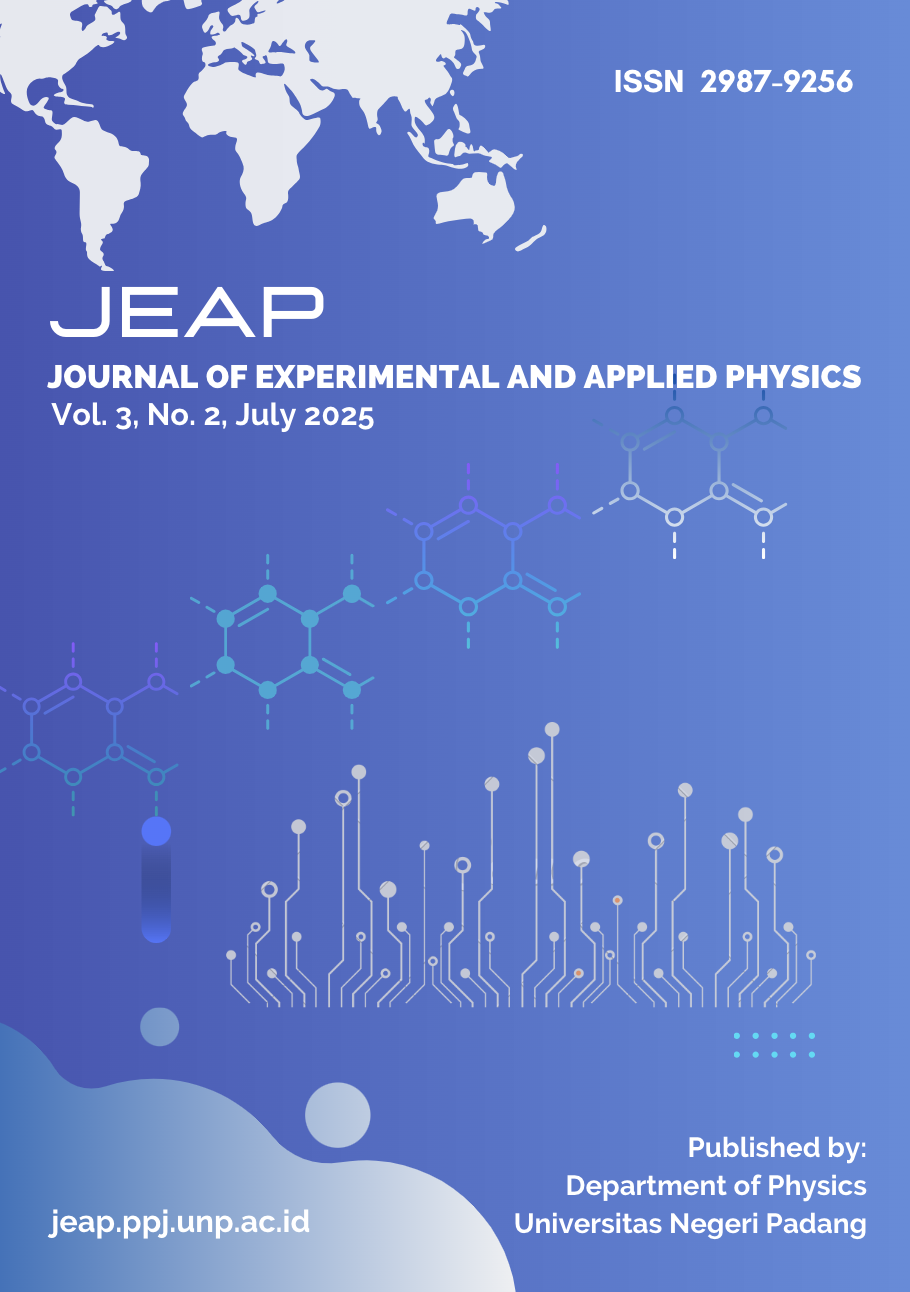Optimation Of Variation Of Massive And Contact Time Using Zeolit On The Reduction Of Iron Metal (Fe) On Dug Well Water In Air Molek Indragiri Hulu
DOI:
https://doi.org/10.24036/jeap.v3i2.107Keywords:
Atomic Absorption Spectrophotometry, Zeolite, Iron MetalAbstract
The limited capacity of the Regional Drinking Water Company (PDAM) to provide clean water has led many communities to rely on groundwater sources, particularly dug wells, for daily use. However, such water sources are prone to contamination by heavy metals. A preliminary analysis using Atomic Absorption Spectrophotometry (AAS) of a dug well in Air Molek, Indragiri Hulu Regency, revealed an iron (Fe) concentration of 1.029 mg/L, exceeding the acceptable limit for clean water. Prolonged use of water with high Fe content poses significant health risks, including gastrointestinal and skin disorders. This study aims to assess the effectiveness of zeolite synthesized from rice husk ash and coal ash in reducing Fe concentrations in well water. An experimental method was employed, in which 1 liter of contaminated water was treated with varying zeolite dosages (1 g, 2 g, and 3 g) and contact times (30, 60, 90, and 120 minutes). The treated water samples were analyzed using AAS to determine the remaining Fe levels. The results demonstrated that the optimal Fe removal was achieved with a zeolite dosage of 2 g/L and a contact time of 60 minutes, indicating the potential of modified zeolite as an effective adsorbent for improving groundwater quality.
Downloads
Published
How to Cite
Issue
Section
License
Copyright (c) 2025 Angel Afrian Azmi

This work is licensed under a Creative Commons Attribution-ShareAlike 4.0 International License.




 Journal of Experimental and Applied Physics
Journal of Experimental and Applied Physics